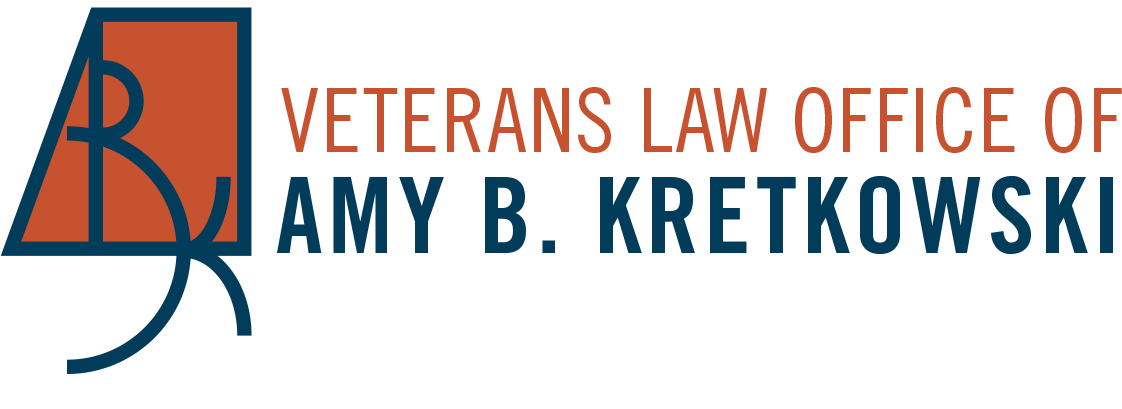Kays: CREDIBLE SUPPORTING EVIDENCE, 38 C.F.R. § 3.304(f)
/Kays v. Snyder, docket no. 2016-1314 (Fed. Cir. Jan. 25, 2017)
HELD: The Court reviews the question of whether a veteran has submitted “credible supporting evidence” to support the occurrence of a claimed PTSD stressor event under the “clearly erroneous” standard of review.
SUMMARY: Charles Kays sought service connection for PTSD based on two non-combat stressor events. In one event, he claimed he was stabbed during a fight. In another, he claimed that while he was taking diving lessons off duty, he assisted in recovery efforts after a helicopter crash. To establish the occurrence of these events, he submitted lay statements, testimony, and a newspaper article regarding the helicopter crash. The article said nothing about recovery assistance provided by diving students.
The Board denied his claim because he did not present evidence to support the occurrence of these stressor events. The Board rejected the lay statements because they were unsupported and contradicted by other evidence of record. The Board rejected the credibility of his testimony regarding the helicopter crash recovery because of the “lack of supporting detail in the article, his delay in reporting the event, and his changing and inconsistent story.”
On appeal to the CAVC, Mr. Kays argued that the Court “should review de novo the Board’s decision on whether a veteran has submitted credible supporting evidence that a claimed in-service stressor occurred.” The CAVC rejected this argument, finding that question to be a factual one that is reviewed under the “clearly erroneous” standard of review. Mr. Kays appealed to the Federal Circuit, and the Federal Circuit agreed with the CAVC.
The regulation in question, 38 C.F.R. § 3.304(f) requires that a non-combat veteran seeking service connection for PTSD provide “credible supporting evidence that the claimed in-service stressor occurred.” Mr. Kays argued that this requirement is an evidentiary burden that the Court should review de novo. The Federal Circuit found that while this requirement does impose an evidentiary burden on the claimant, this is “a quintessential factual inquiry” and “precisely the type of factual determination that the Board is tasked with making” and that “the Veterans Court reviews for clear error.”
The Court further noted that de novo review is reserved for situations where the Board “has explicitly interpreted a statute or regulation ‘concerning the correct standard for service connection’” or is “establishing a legal rule to be applied to similar fact situations in future cases.” The Court found that the Board “made quintessential factual determinations regarding Mr. Kays’s evidence, statements, and credibility, and found that he was not entitled to service connection.” The Court thus held that the CAVC “appropriately reviewed these factual determinations under the clearly erroneous standard.”
At oral argument, the veteran asserted that the regulation “requires only evidence that the ‘stressor occurred,’ not that it occurred to the veteran.” (emphasis in original). The Court rejected this argument, stating that the regulation requires “credible supporting evidence that the claimed in-service stressor occurred.” Mr. Kays’s claimed in-service stressor involved his participation in the recovery efforts following a helicopter crash. The regulation thus required him “to submit credible evidence that he was involved in search and rescue activities and not simply that a civilian helicopter crash occurred.”
The Court also rejected Mr. Kays’s argument that his current PTSD diagnosis “assures that the in-service stressor occurred to the veteran,” finding that “a physician’s diagnosis of PTSD does not necessarily identify what stressor caused it.” The Court stated that “the regulation requires the veteran to separately submit credible supporting evidence that the claimed in-service stressor occurred.” The Federal Circuit thus held that the CAVC “applied the proper standard of review” and affirmed its decision “because § 3.304(f) requires credible supporting evidence that the claimed in-service stressor occurred as claimed by the veteran.”
Advocacy note: The focus of this case is on the CAVC’s standard of review of the Board’s factual determination as to whether a veteran has submitted “credible supporting evidence that the claimed in-service stressor occurred.” The CAVC has previously held that the requirement of corroborating evidence under 38 C.F.R. § 3.304(f) does not require “corroboration of every detail including the appellant’s personal participation in the [event].” Suozzi v. Brown, 10 Vet.App. 307, 311 (1997); see also Pentecost v. Principi, 16 Vet.App. 124, 129 (2002) (holding that § 3.304(f) “only requires, as to stressor corroboration, ‘credible supporting evidence’ that the claimed in-service stressor occurred”).
In both Suozzi and Pentecost, the Court held that where there was corroborating evidence of the occurrence of a stressor event, the veteran’s personal involvement could, in certain circumstances, be inferred from the evidence. In Suozzi, the corroborating evidence showed that the veteran’s unit in Vietnam experienced casualties from an attack – and the Court could infer from this evidence that even a “company clerk [the claimant] would assist in the casualty identification.” Suozzi, 10 Vet.App. at 310-11. In Pentecost, the corroborating evidence showed that the veteran was stationed with a unit in Vietnam that experienced rocket attacks – and the Court found that this evidence “strongly suggest[s] that he was, in fact, exposed to the attacks.” Pentecost, 16 Vet.App. at 128.
Although the Federal Circuit in Kays did not mention Suozzi or Pentecost, its decision appears to undermine the holdings of those two cases. One distinguishing factor is that the stressor events in Kays occurred while the veteran was off duty, and, therefore, there were no service records to corroborate these events – whereas the events in Suozzi and Pentecost were corroborated by service records showing that the claimed events actually happened to the claimants’ units, and the Court could thus infer the claimants’ participation in those events.
As a practical matter, advocates should explain the credible, corroborating facts of their cases at the agency level – and, if denied, should argue at the Court that the Board’s rejection of that credible, corroborating evidence was clearly erroneous.


